Benefits of Group Therapy
It was 2002, and I watched as Julie, my practicum supervisor, sat down with two first graders to read Mouse Paint. I watched as she saw not one but two students at the same time. My young SLP mind was blown, and I relished in every detail—her ability to address individualized goals, her skills for engaging both personalities and her flexibility in navigating the nuances of increasing the number of humans in the same space. In those few months, I quickly saw the benefits of group speech therapy:
- Students saw peers working on their communication—this comforted their hearts.
- Students used their communication skills within a social context—this makes communication more functional.
- SLP effectively supports her caseload in a functional manner.
Group Needs
Now, let’s fast forward to 2016, and I am on my way to pull a group of 7 students to work on their articulation and language skills. Here is what the group looks like:
- 4 kindergarteners, 3 first graders
- 6 students working on language goals (story retell, answering questions, correct verb tense, describing)
- 1 student working on his /s/ and/z/ sounds
- 2 students with attentional needs
SLP Needs
As the speech-language pathologist, here is what I need:
- One activity to address ALL goals
- Data
- Engaged students
4 Steps for Group Speech Therapy Using One Book
When it comes to therapy, I will use a book. Why? It allows me to address all areas of speech-language therapy, it is a tool used in general education classrooms (aligning to the curriculum) and it’s a functional activity. Typically, I use one book for the month. This month, I am reading one of my favorites, A Chair for My Mother. This book is age-appropriate (4-9 years), has beautiful visuals (Caldecott Honor) and incorporates the themes of working hard, family and community support.
-
- Review goals. I reviewed each student’s “job” for the delay. “I work (clap, clap). I work (clap, clap). I work on telling a story.”
- Review story grammar. Collectively, the student recite the story grammar rap. The student working on this /s/ sound is asked to drill on the following words from the rap: story, characters, setting, what’s, solution, solve. Here is a sample of Jessie showing us the parts of a story.
3.Describe. The students are then asked to select their favorite scene to draw. While drawing, students are asked to describe their scene. Personally, I like to use tenets of Linda Mood-Bell’s Visualizing and Verbalizing program. In a nutshell, without the ability to visualize and describe what we hear, it’s difficult to answer questions, understand information and make inferences about the material. The following is discussed when describing: name of item, category, color, size, shape, texture, sound, perspective and background. The student working on his articulation is repeating phrases and sentences containing the /s/ and /z/ sounds in a drill format while drawing and coloring his picture.
4. Sequence. Upon completion of the drawings, the students are then asked to put their pictures in sequential order.
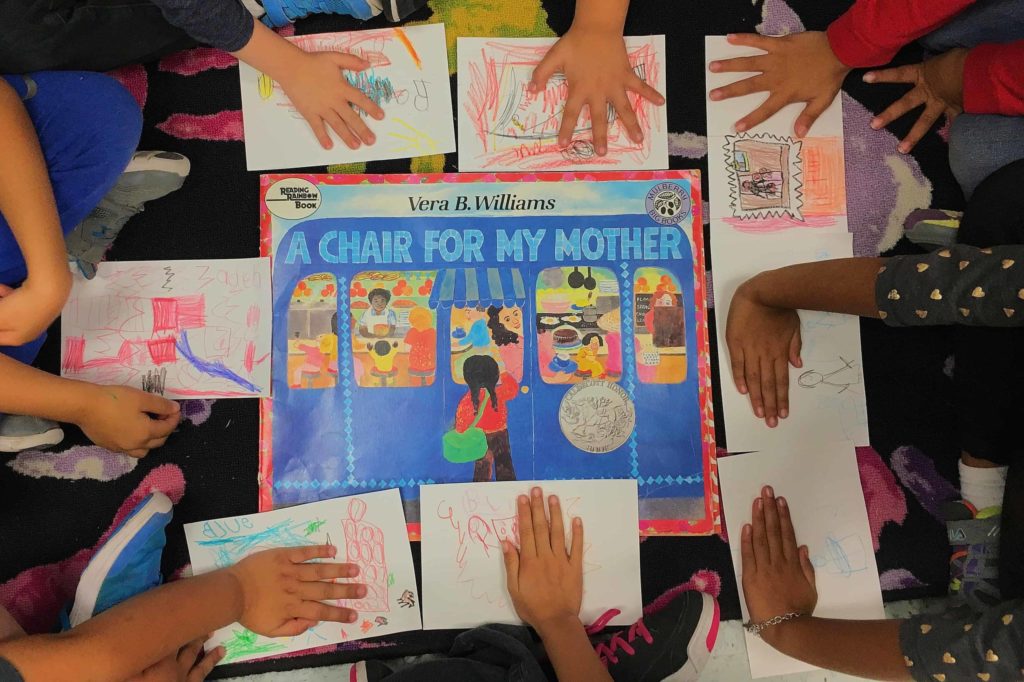
In the next session, the students will put all of the pictures in order in a line. While jumping on each picture, they will describe each scene and subsequently retell the story. And, there you have it—a group speech therapy session using one book to address various communication needs!
We’ve created a book filled with language intervention tools and activities. If you want to implement great speech therapy without having to spend loads of time, give yourself the gift of Literacy-Based Speech and Language Activities.

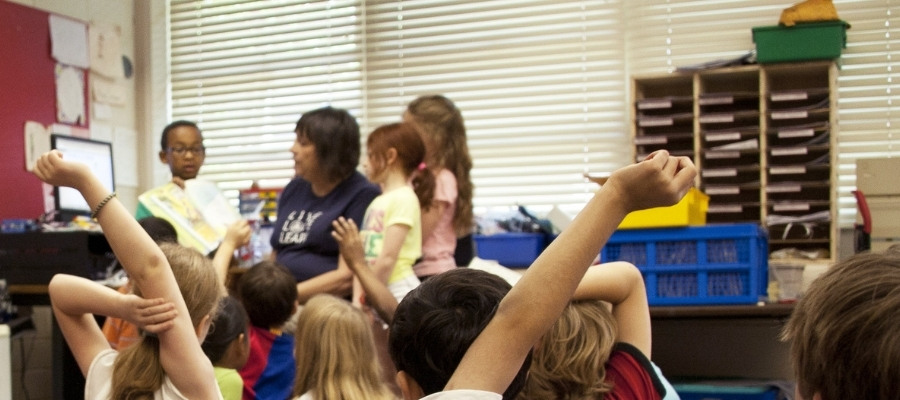
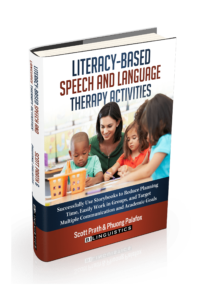

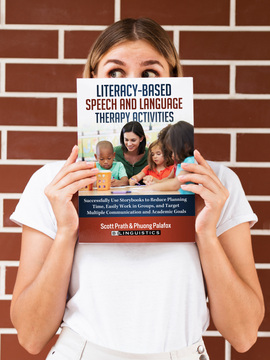
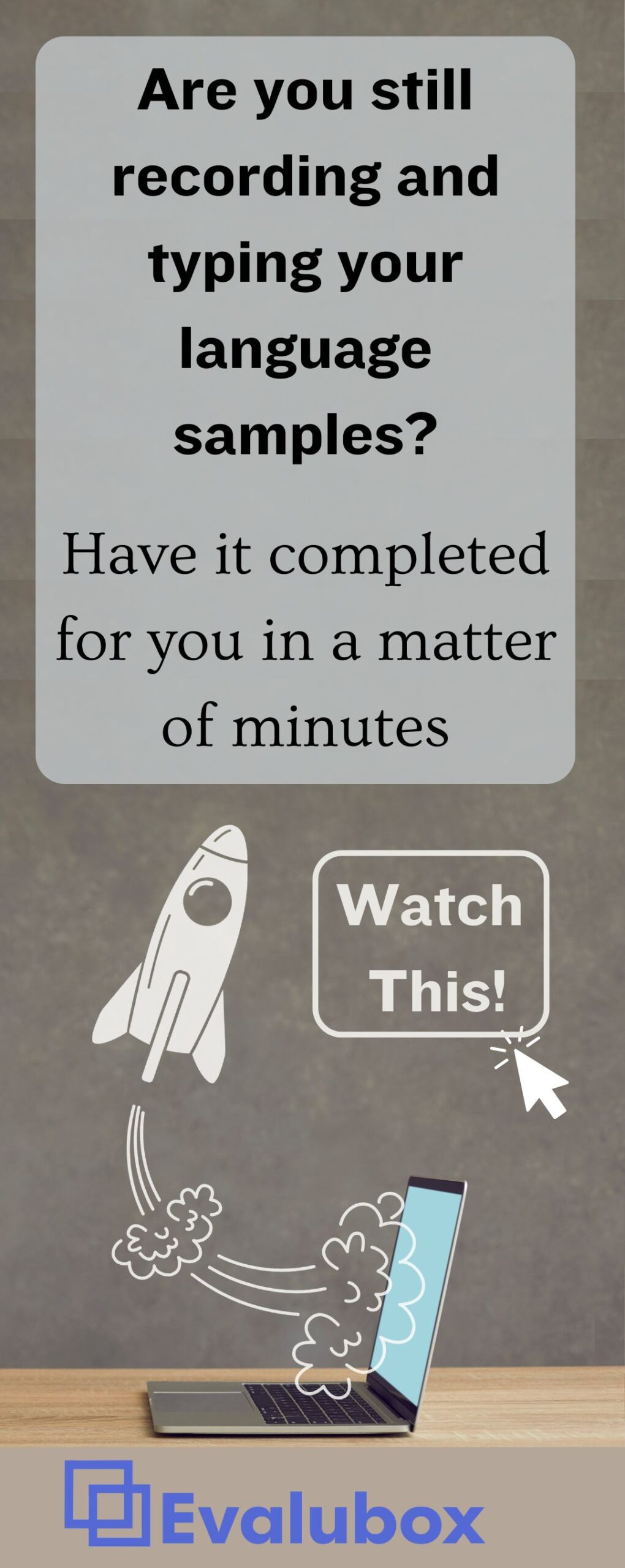
Thank you for this interesting article. As a speech pathologist, I am interested in finding more about the Visualising and Verbalising program. Having visited the Linda Mood website, I see that there are manuals for teachers and children. Can a person without prior knowledge of the programme use it effectively in therapy from reading the teacher’s manual or would further training be required? Thanks!
Bernadette, I have not attended a formal training conducted by the Lindamood-Bell academy; however, I have used the Visualizing and Verbalizing book. It’s is a stand-along, easy-to-use book. I have used tenets of the Visualizing and Verbalizing program since 2002, and the book was published in 2007. If you work in a school district, I have often found it on a teacher’s shelf. I will whole-heartedly say that this program has changed my language therapy. It works for most of my students with language impairments because it gives a systematic way for them to describe and visualize the content. Without picturing something, it’s difficult to understand it and talk about it. With visualizing, the students are able to answer questions and….INFER and DRAW CONCLUSIONS. It has also worked well for my students with Autism Spectrum Disorders, as well. Because it makes the informational input visual, the students are able to “organize” this visual input, find words to express and describe what they are reading/hearing and then 1) retell a story and 2) answer basic and higher level thinking questions. Good luck. Let us know how it goes.
Take care,
Phuong
While this sounds like a familiar scene from my own speech therapy practice, I was disappointed not to hear more about how you manage to take data on all 7 kids at once. What system do you use–post-its with the child’s name and plus/minus? A grid of some sort with the group already entered, along with their goals addressed for that session? It’s always helpful to hear about other people’s specific methods…In my experience taking data during literature based activities is especially challenging. I would love to have a better method to try.
Thanks!
Hi Kate,
Thanks so much for your question. I am continually on a data-journey as an SLP. I use a self-created data sheet that I made years ago, and I will send it to you right now via email. In a former life, I was a the lead of a school district with about 50 SLPs, and I asked all the SLPs to send me their favorite data sheet. I collected all of the documents and put them on a shared drive. I will say that looking at each data template brought me perspective. However, at the end of the day, I continued to use my own sheet because it met my needs. With your question, I am going to address this topic on our blog—thank you for being the catalyst to a great post idea!
For this session, I had each student’s name and the specific objective I was going to address on my data sheet. I organized the students with similar goals because it helped my brain stay organized. And, because of the size of the group, I actually did what you recommended. There was a post-it for each student in front of me when their objective. The student working on articulation, at this time, is able to say his /s/ and /z/ sounds at the phrase and sentence levels, and I only address artic through drill once a student is able to produce the sound and self-discriminate. So, he was actually holding a counter and keeping track of his drills during the session. At the end of the session, he just proudly tells me how many times he said his phrase/sentence, and that becomes my data. Thanh is able to say the /s/ and /z/ at the phrase and sentence levels with 100% accuracy with minimal prompts – 127 repetitions.
SLPs have often asked about data-keeping, and I will say that I do not take numerical data at every session. In saying this, I acknowledge that all sessions address the student’s individualized goals and objectives. So, for example, I only use one book per month, and, at the beginning of the month, I will take time to read the book. During this time, it is difficult to take data on skills such a story retell. This time, however, is great for taking data on students working on answering wh-questions. So, I focus my data-keeping on specific students for each session.
Honestly, Kate, we have a hard (and oh-so-rewarding) job as school-based SLPs. I will say that this group took place because I needed to make-up therapy (a topic for another day), and I had to make it work. I know we do important, meaningful work. So, I keep trying to continually make things better. Again, thank you for your feedback and for the efforts you give to Richardson ISD. Happy holidays—I’m sure you’ve earned a well-deserved break.
Take care,
Phuong
Phuong,
Thanks for sharing. I too would love to have a copy of the data sheet you use although it sounds as if you may be blogging about it soon. In my district we are required to have data for each session. One we (myself and other SLPs) have adjusted for this is to take the first few minutes of each session to collect data on a set number of trials. Then the rest of the session can be spent on the activity without worry of collecting data. Of course we are still targeting each individual’s goal(s) and occasionally data is kept during the activity but perhaps for just 1-2 students rather than trying to keep track of everyone’s during each session. I always love to learn how others are providing therapy!
Enjoy your break!
Rebecca
Rebecca,
Thanks so much for your input. The data sheet was just sent to you. As a former lead, I can see why a district would request numerical data for each session. It sounds like you and your fellow SLP peers have found an effective way to meet district compliance and the communication needs of your students. Creative and flexible thinking is an important part of our job–it’s always a continual balance of managing all of our responsibilities (half of which is not direct service), giving effective therapy within the parameters of school schedules/systems and working alongside fellow educators. And, yes, I have the data-keeping blog post in the works!
Take care,
Phuong
Hello! I saw your presentation at TSHA last year and LOVED it! Can you please also send me a copy of your datasheet example? Thank you!
Hi Patty! I’m glad you found the presentation useful. Following this blog post, we received requests for more information related to data tracking. So, I wrote a follow-up post about data. Included are also three data template sheets our SLPs use. Here’s to a good end-of-spring. We are in the home stretch! Take care, Phuong.
Hi,
Thanks for this great discussion and presentation. i’m glad to also receive a copy of your datasheet.
Thank you
Great Arthur.
Check out the book or the literacy based templates if you haven’t already.
Scott